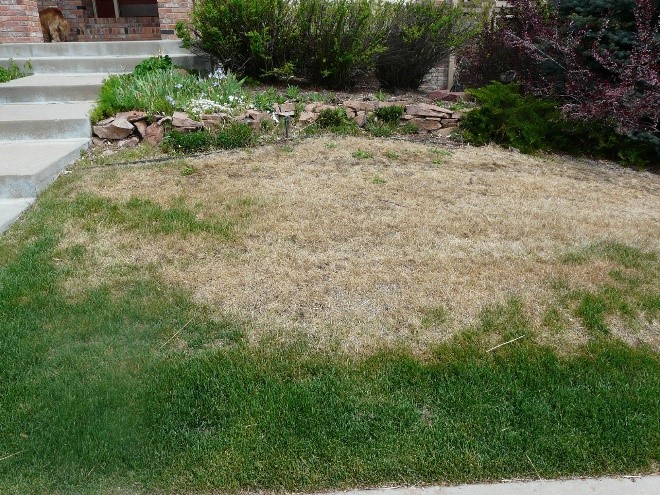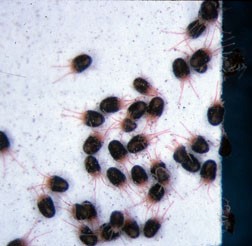What’s Bugging Your Lawn?
- 2023-01-05
- By mkirk
- Posted in Horticulture, The Garden Buzz
By Pam Rosendal, Colorado Master Gardener
It’s January. What could possibly be bugging your lawn? It’s the middle of winter, after all. Surprisingly, mites are active in winter and may be damaging lawns while you’re indoors enjoying a mug of hot chocolate.

Mites are tiny, smaller than a pinhead, spiders making themselves at home in the lawn. In Colorado, the three most common mites are: banks grass mites, clover mites and brown wheat mites. It’s the clover mites and brown wheat mites that are most active from February through May. They cause lawn damage by sucking moisture from grass blades. We’ve all seen the result come spring with yellow or brown patches that don’t green up with the rest of the lawn. Most often, the damage is found on south- or west-facing slopes. With severe mite damage, the turf may need to be renovated or replaced.

The easiest way to tell if mites are active in your lawn is to wipe the surface of the turf with a piece of white paper. If you see red or brown streaks across the paper, mites are living in and likely noshing on your grass. Small black spots on grass blades are evidence of mite damage.
The most effective way to prevent serious mite damage during winter into early spring is to water the lawn – especially areas with south and west exposures. Windy sites also benefit from additional water. Water only when temperatures are over 40°F and at midday so water soaks in before possible freezing temperatures overnight. Much like the adage about an ounce of prevention, a little water in winter will go a long way in avoiding mite damage to lawns come spring. Not to mention money and time saved when you don’t need to renovate severely damaged turf.
Check out our resources for more information on mites, mite damage to lawns, winter watering, lawn renovation and everything you need to know about lawn care.
Horticulture Resources
- Garden Buzz Archives
- CSU Extension Resources
- Colorado Master Gardener Program
- Foothills to Plains Native Plant Master Program
- Native Bee Watch Community Science Program
- The Co-Hort Blog
- PlantTalk Colorado
- Soil Testing
- Plant Select
- Emerald Ash Borer
- Japanese Beetle
- Colorado State Forest Service
- Ask an Expert

